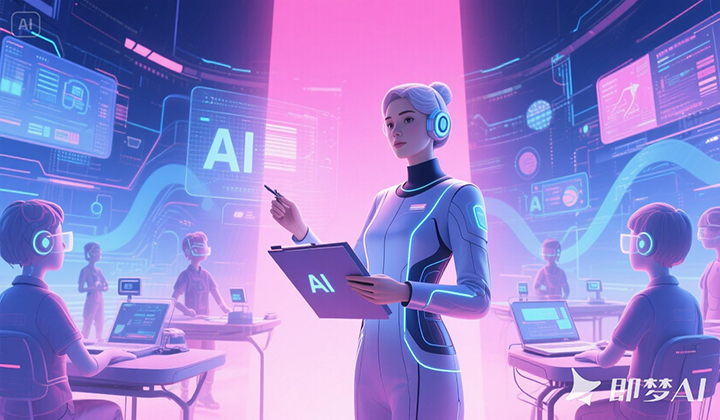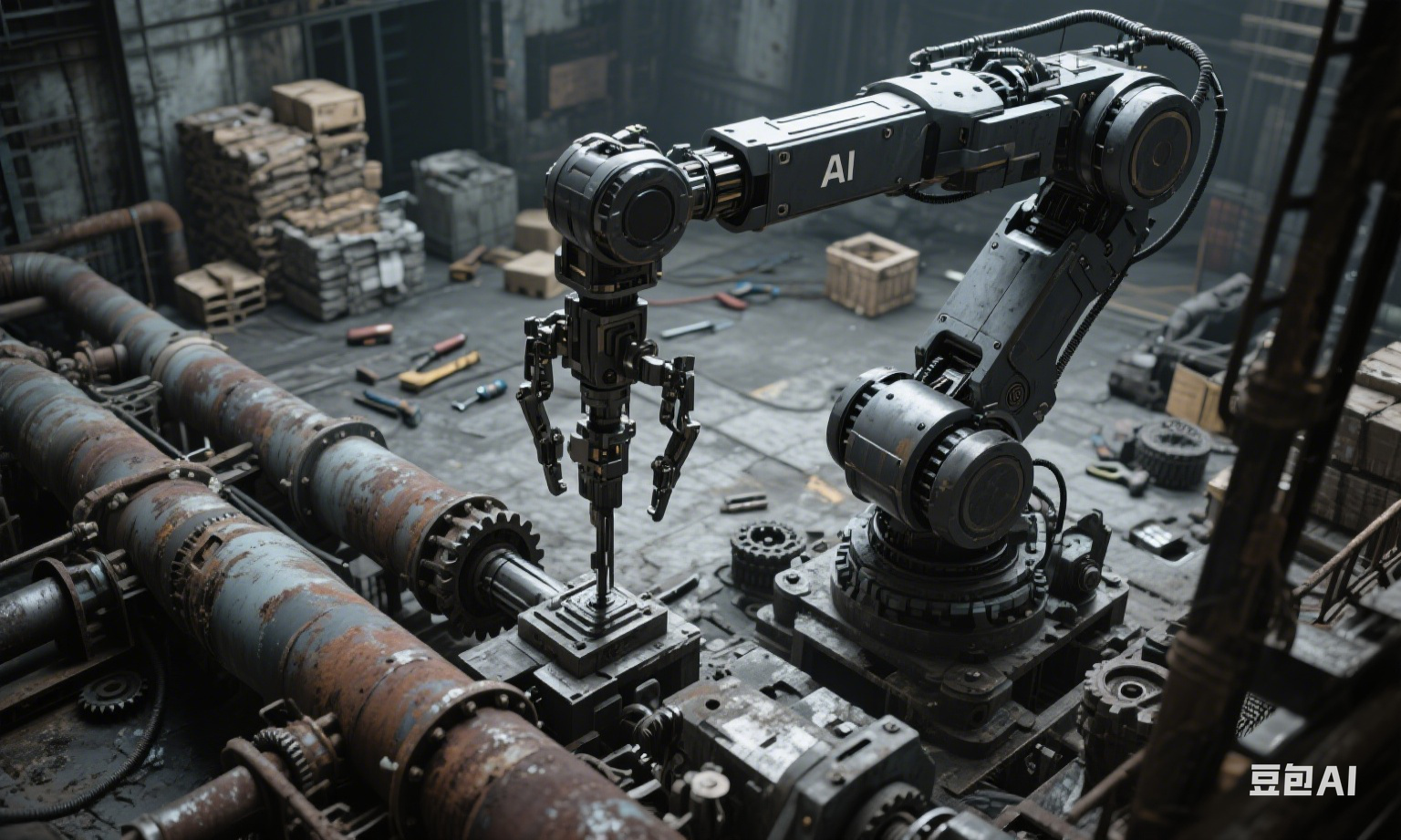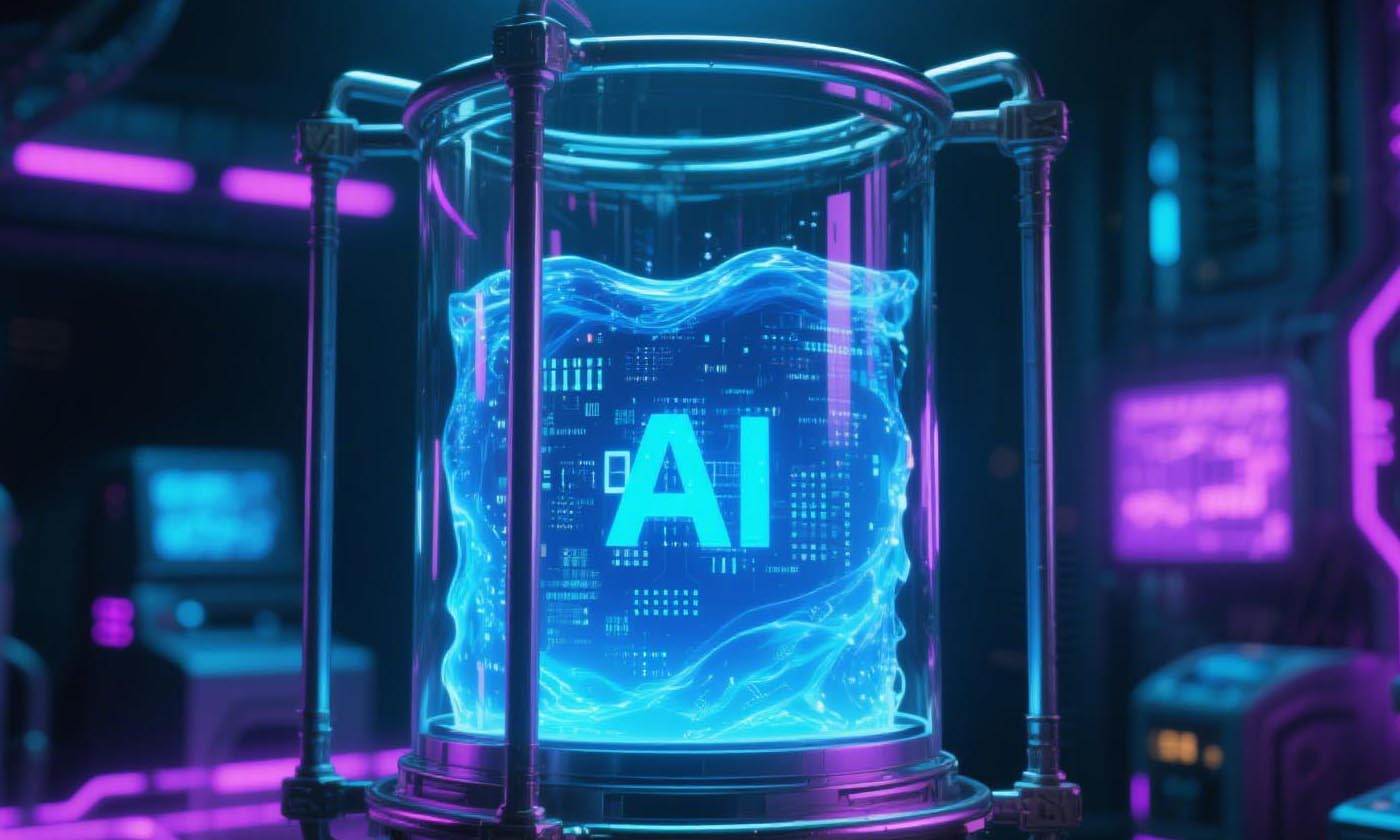AI in Pet Care: Transforming the Bond Between Humans and Their Companions
观棋 2025-06-11
The integration of artificial intelligence (AI) into pet care is revolutionizing how we understand, nurture, and connect with our furry friends. From personalized health monitoring to intelligent feeding and emotional enrichment, AI technologies are addressing the evolving needs of modern pet owners—balancing convenience, wellness, and companionship in an era of busy lifestyles. This article explores the transformative applications of AI in pet care, its impact on key domains, and the vision for a more intuitive, data-driven relationship between humans and pets.
AI in Pet Care: Transforming the Bond Between Humans and Their Companions
The integration of artificial intelligence (AI) into pet care is revolutionizing how we understand, nurture, and connect with our furry friends. From personalized health monitoring to intelligent feeding and emotional enrichment, AI technologies are addressing the evolving needs of modern pet owners—balancing convenience, wellness, and companionship in an era of busy lifestyles. This article explores the transformative applications of AI in pet care, its impact on key domains, and the vision for a more intuitive, data-driven relationship between humans and pets.
1. Smart Health Monitoring: Proactive Care for Lifelong Wellness
AI is turning pet health management from reactive to proactive, leveraging sensors, machine learning, and behavioral analysis to detect early signs of illness. Wearable devices like Whistle Health (now part of Mars Petcare) use accelerometers and GPS to track a dog’s activity, sleep patterns, and calorie burn, with AI algorithms flagging anomalies—such as a 30% drop in activity—that may indicate arthritis or depression. In a 2023 study, these systems reduced unnecessary vet visits by 25% while improving early detection of chronic conditions .
For cats, PetPace Collars monitor 13 vital signs, including respiration rate and body temperature, using AI to predict litter box issues or urinary tract infections up to 48 hours before symptoms appear. The system has achieved 92% accuracy in detecting heat cycles in female cats, helping breeders optimize care . Meanwhile, VetInsight’s AI Platform analyzes 50 million pathology reports to identify breed-specific health risks—e.g., predicting a 40% higher likelihood of hip dysplasia in Golden Retrievers—enabling personalized preventive care plans.
2. Intelligent Feeding and Nutrition: Tailored to Every Pet’s Needs
Gone are the days of one-size-fits-all pet diets. AI-driven feeding systems like Farmacy Pets’ Customized Meal Planner use machine learning to analyze a pet’s age, weight, activity level, and even genetic predispositions (via DNA test data) to recommend optimal calorie intake and nutrient balance. For a 7-year-old diabetic cat, the algorithm might reduce carbohydrate content by 15% while increasing omega-3s for heart health, a level of precision impossible with manual planning .
Autonomous feeders like Furbo 360° Dog Camera take this further, using computer vision to recognize individual pets and dispense portion-controlled meals. In multi-pet households, the system ensures each animal—say, a overweight tabby and a active puppy—receives its tailored diet, preventing food theft and overeating. AI also optimizes food production: NomNomNow uses demand forecasting models to reduce meal waste by 30%, matching fresh food deliveries to real-time changes in pet ownership trends.
3. Behavioral Analysis: Decoding the Language of Pets
AI is breaking down the communication barrier between humans and pets by translating subtle cues into actionable insights. CogniPet’s AI Behavior Tracker, for example, uses facial recognition to identify 12 feline expressions—from "anxious" to "playful"—with 89% accuracy, helping owners adjust environments to reduce stress. In shelters, this technology has cut adoption wait times by 40% by matching pets with compatible families based on activity level and temperament .
For dogs, Embark Vet’s AI-Powered Training Tool analyzes barking patterns and body language to distinguish between needs like "I’m hungry" and "I need to go out." The system, tested with 5,000 households, reduced training time for basic commands by 55% while improving owner-pet communication. These tools not only enhance daily care but also deepen emotional bonds by fostering mutual understanding.
4. Emotional Enrichment: Keeping Pets Happy When Alone
AI-driven toys and companions are addressing the loneliness many pets experience when owners are away. PetCube Bites 2 Lite combines a camera, treat dispenser, and AI-powered motion sensor to detect when a dog is bored or anxious (e.g., excessive pacing) and automatically activate a 10-minute play session with moving lasers or squeaky toys. Users report a 60% reduction in destructive behavior during work hours .
For cats, Catry’s Smart Litter Box goes beyond hygiene: its AI analyzes bathroom habits to detect stress-related issues like inappropriate urination, while the Kuri Robot (from Mayfield Robotics) engages in interactive "chats" using natural language processing, mimicking a pet’s vocalizations to provide comfort. These technologies recognize that pets’ mental health is as important as their physical well-being, especially in urban environments where outdoor access is limited.
5. Challenges and Ethical Considerations
While AI enhances pet care, it also raises important questions:
Data Privacy: Wearables and cameras collect sensitive data—pet locations, health metrics—that must be protected from misuse. Companies like Tractive have introduced end-to-end encryption, but only 38% of pet tech firms meet GDPR-level data standards, according to a 2024 CyberPet report .
Over-Reliance on Technology: There’s a risk of owners prioritizing app alerts over direct observation. Veterinarians caution that AI should complement, not replace, human interaction—e.g., a sudden change in tail wagging might signal distress faster than any algorithm .
Cost and Accessibility: High-end AI pet devices (e.g., $500+ health collars) remain unaffordable for many, exacerbating care inequalities. Initiatives like Banfield Pet Hospital’s AI Subsidy Program aim to make diagnostics more accessible, but global scaling is needed .
6. The Future of AI in Pet Care: From Tools to Companions
Looking ahead, AI will drive pet care toward three transformative frontiers:
Emotion-Aware Systems: Advances in affective computing will enable devices like Sony’s Aibo 2.0 to recognize and respond to human emotions, creating reciprocal bonds where pets adapt their behavior to their owners’ moods .
Precision Medicine for Pets: AI will analyze genomic data to develop breed-specific vaccines and cancer treatments, mirroring human personalized medicine. Gensight Biologics is already using machine learning to predict drug efficacy in canine osteoarthritis, cutting trial times by 30% .
Ecosystem Integration: Smart homes will sync with pet AI devices—e.g., adjusting room temperature when a geriatric cat’s collar detects joint stiffness or ordering food automatically when the feeder runs low, creating seamless, adaptive care environments .
Conclusion
AI is not just improving pet care; it’s redefining the human-pet relationship in the digital age. By translating data into empathy, these technologies empower owners to provide unprecedented levels of personalized care, while also deepening the emotional connection that makes pets such vital members of our families. As challenges like privacy and affordability are addressed, the future of pet care promises to be smarter, kinder, and more in tune with the unique needs of every companion—whether furry, feathered, or finned.
In this era of intelligent innovation, the bond between humans and pets is stronger than ever, proving that even in a world of algorithms, the heart of care remains unchanged: a commitment to ensuring our animal friends live their healthiest, happiest lives.
The integration of artificial intelligence (AI) into pet care is revolutionizing how we understand, nurture, and connect with our furry friends. From personalized health monitoring to intelligent feeding and emotional enrichment, AI technologies are addressing the evolving needs of modern pet owners—balancing convenience, wellness, and companionship in an era of busy lifestyles. This article explores the transformative applications of AI in pet care, its impact on key domains, and the vision for a more intuitive, data-driven relationship between humans and pets.
1. Smart Health Monitoring: Proactive Care for Lifelong Wellness
AI is turning pet health management from reactive to proactive, leveraging sensors, machine learning, and behavioral analysis to detect early signs of illness. Wearable devices like Whistle Health (now part of Mars Petcare) use accelerometers and GPS to track a dog’s activity, sleep patterns, and calorie burn, with AI algorithms flagging anomalies—such as a 30% drop in activity—that may indicate arthritis or depression. In a 2023 study, these systems reduced unnecessary vet visits by 25% while improving early detection of chronic conditions .
For cats, PetPace Collars monitor 13 vital signs, including respiration rate and body temperature, using AI to predict litter box issues or urinary tract infections up to 48 hours before symptoms appear. The system has achieved 92% accuracy in detecting heat cycles in female cats, helping breeders optimize care . Meanwhile, VetInsight’s AI Platform analyzes 50 million pathology reports to identify breed-specific health risks—e.g., predicting a 40% higher likelihood of hip dysplasia in Golden Retrievers—enabling personalized preventive care plans.
2. Intelligent Feeding and Nutrition: Tailored to Every Pet’s Needs
Gone are the days of one-size-fits-all pet diets. AI-driven feeding systems like Farmacy Pets’ Customized Meal Planner use machine learning to analyze a pet’s age, weight, activity level, and even genetic predispositions (via DNA test data) to recommend optimal calorie intake and nutrient balance. For a 7-year-old diabetic cat, the algorithm might reduce carbohydrate content by 15% while increasing omega-3s for heart health, a level of precision impossible with manual planning .
Autonomous feeders like Furbo 360° Dog Camera take this further, using computer vision to recognize individual pets and dispense portion-controlled meals. In multi-pet households, the system ensures each animal—say, a overweight tabby and a active puppy—receives its tailored diet, preventing food theft and overeating. AI also optimizes food production: NomNomNow uses demand forecasting models to reduce meal waste by 30%, matching fresh food deliveries to real-time changes in pet ownership trends.
3. Behavioral Analysis: Decoding the Language of Pets
AI is breaking down the communication barrier between humans and pets by translating subtle cues into actionable insights. CogniPet’s AI Behavior Tracker, for example, uses facial recognition to identify 12 feline expressions—from "anxious" to "playful"—with 89% accuracy, helping owners adjust environments to reduce stress. In shelters, this technology has cut adoption wait times by 40% by matching pets with compatible families based on activity level and temperament .
For dogs, Embark Vet’s AI-Powered Training Tool analyzes barking patterns and body language to distinguish between needs like "I’m hungry" and "I need to go out." The system, tested with 5,000 households, reduced training time for basic commands by 55% while improving owner-pet communication. These tools not only enhance daily care but also deepen emotional bonds by fostering mutual understanding.
4. Emotional Enrichment: Keeping Pets Happy When Alone
AI-driven toys and companions are addressing the loneliness many pets experience when owners are away. PetCube Bites 2 Lite combines a camera, treat dispenser, and AI-powered motion sensor to detect when a dog is bored or anxious (e.g., excessive pacing) and automatically activate a 10-minute play session with moving lasers or squeaky toys. Users report a 60% reduction in destructive behavior during work hours .
For cats, Catry’s Smart Litter Box goes beyond hygiene: its AI analyzes bathroom habits to detect stress-related issues like inappropriate urination, while the Kuri Robot (from Mayfield Robotics) engages in interactive "chats" using natural language processing, mimicking a pet’s vocalizations to provide comfort. These technologies recognize that pets’ mental health is as important as their physical well-being, especially in urban environments where outdoor access is limited.
5. Challenges and Ethical Considerations
While AI enhances pet care, it also raises important questions:
Data Privacy: Wearables and cameras collect sensitive data—pet locations, health metrics—that must be protected from misuse. Companies like Tractive have introduced end-to-end encryption, but only 38% of pet tech firms meet GDPR-level data standards, according to a 2024 CyberPet report .
Over-Reliance on Technology: There’s a risk of owners prioritizing app alerts over direct observation. Veterinarians caution that AI should complement, not replace, human interaction—e.g., a sudden change in tail wagging might signal distress faster than any algorithm .
Cost and Accessibility: High-end AI pet devices (e.g., $500+ health collars) remain unaffordable for many, exacerbating care inequalities. Initiatives like Banfield Pet Hospital’s AI Subsidy Program aim to make diagnostics more accessible, but global scaling is needed .
6. The Future of AI in Pet Care: From Tools to Companions
Looking ahead, AI will drive pet care toward three transformative frontiers:
Emotion-Aware Systems: Advances in affective computing will enable devices like Sony’s Aibo 2.0 to recognize and respond to human emotions, creating reciprocal bonds where pets adapt their behavior to their owners’ moods .
Precision Medicine for Pets: AI will analyze genomic data to develop breed-specific vaccines and cancer treatments, mirroring human personalized medicine. Gensight Biologics is already using machine learning to predict drug efficacy in canine osteoarthritis, cutting trial times by 30% .
Ecosystem Integration: Smart homes will sync with pet AI devices—e.g., adjusting room temperature when a geriatric cat’s collar detects joint stiffness or ordering food automatically when the feeder runs low, creating seamless, adaptive care environments .
Conclusion
AI is not just improving pet care; it’s redefining the human-pet relationship in the digital age. By translating data into empathy, these technologies empower owners to provide unprecedented levels of personalized care, while also deepening the emotional connection that makes pets such vital members of our families. As challenges like privacy and affordability are addressed, the future of pet care promises to be smarter, kinder, and more in tune with the unique needs of every companion—whether furry, feathered, or finned.
In this era of intelligent innovation, the bond between humans and pets is stronger than ever, proving that even in a world of algorithms, the heart of care remains unchanged: a commitment to ensuring our animal friends live their healthiest, happiest lives.












